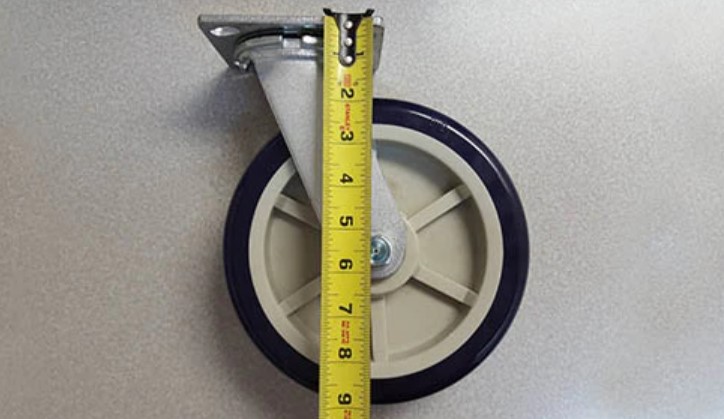
Before buying casters, hamilton casters, you need to consider the load they will carry. Knowing the weight of your items is essential to choosing the right caster size. Also, you need to select the material and thread size for your application. Read this to learn more about selecting casters. Here are some tips:
Calculating the load of casters
There are several factors to consider when calculating the load capacity of your casters. First, consider the weight of the moving equipment and the maximum load capacity of each caster. Then divide the total weight of the moving equipment by the number of casters. The resulting figure will be the total load capacity of each caster. It would be best if you also take into consideration the safety factor for casters with different weight capacities, usually around 33 percent.
To select the correct caster, first, consider the weight capacity. The load capacity is the maximum weight that a single caster can handle for intermittent operations on a smooth floor. Divide this figure by the number of casters in the cart. Manufacturers distinguish between static and dynamic loads. The static load is the weight that sits on the caster while rolling, whereas the dynamic load is the weight that moves on the caster during normal movement.
Choosing the right casters
There are many different types of casters, each with another purpose. Size and type are important considerations when choosing the right ones. Casters are fastened to a top plate that connects to the object they’re intended to move. Sizes range from 2 3/8″ to 3 5″. Measure the area where you’ll be using the casters and make sure the existing ones are the accurate size.
The diameter of the wheel is essential to consider when choosing suitable casters. The larger the wheel, the more surface area it can cover. Also, larger wheels are easier to roll, although they carry a lower load. If you’re moving a heavy object often, you’ll want a larger wheel. Choosing the right size will prevent your casters from wearing out quickly and causing floor damage.
Choosing the right material
When choosing the material of casters, the manufacturer should consider the application to ensure a long-lasting product. Some materials are more suitable for heavy-duty applications than others. Cast iron, for example, is an excellent choice for heavy-duty applications. Cast iron can be molded into almost any shape without breaking or deteriorating, and its strength is retained even after repeated use. Stainless steel, however, is not as corrosion-resistant as its counterpart and is not recommended for high-humidity environments.
The material of wheels and tires will also depend on the flooring. A smooth floor requires a softer material than a rough one. Weaker casters are best for interior applications. If the surface is not too rough, choose softer wheels to avoid damaging the floor. While steel and rubber are the most rigid materials on floors, rubber and polyurethane are the best choices for heavy-duty applications. However, to protect your floor, you should consider the type of floor before purchasing casters.
Choosing the right tread
Choosing the right thread size for caster wheels is vital for various applications. There are several types of caster wheels, and choosing the correct size is essential for smooth rolling. Some wheels have softer treads, while others have hard treads. The tread size of the caster wheel depends on the type of floor surface and the weight it will support. There are advantages and disadvantages to each type. To choose the right size for your casters, consider the following:
Choosing the right thread size for caster wheels is important for smooth and safe operations. Buying the wrong size may result in unwelcome consequences. It could even lead to a halt in business operations and a liability issue. When choosing casters for your business, you should know that there are various sizes and types of treads available. It is crucial to pick the proper size for the casters to avoid damage to floors and minimize maintenance.
Choosing the right size
While casters are very useful, there are several factors that you need to consider when selecting them. First, ensure you have a good idea of the weight of the equipment you’re moving. The more heavy equipment you have, the larger the wheels must be. It would help if you also considered whether the casters would be exposed to constant water or be used inside an oven. The weight of the equipment will help you decide which type of caster is best for your situation.
When choosing the size of your casters, it’s essential to consider the amount of side thrust they generate. If this happens, the wheel treads may become uneven, or the hub may crack. Also, bearings may deform or bend due to side thrust. Lastly, the correct size for your furniture depends on the type of floor it’s put on. To choose the proper casters, take measurements of the caster forks and their base.






